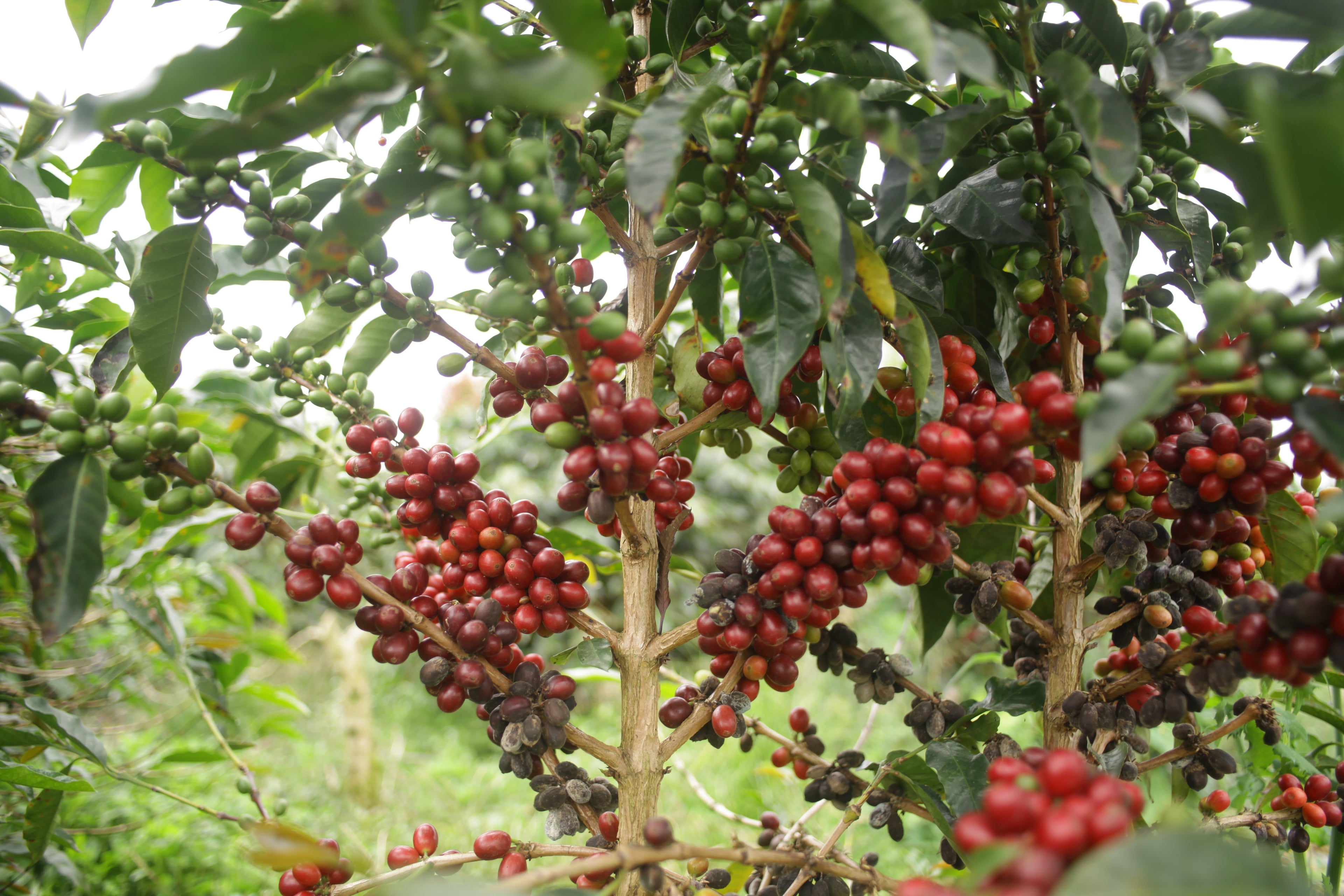
Puncak Sirna
Coffee Production at Puncak Sirna Mill – Java, Indonesia
1. Historical Background
The Puncak Sirna Mill is located in the Rancabali subdistrict of Bandung Regency in West Java, an area historically rooted in Indonesia’s coffee legacy. While Java has long been known for its colonial-era estates producing washed Arabicas, Puncak Sirna represents a modern shift toward smallholder-based, quality-driven specialty coffee. Opened in 2022 through a partnership between PT Sucafina Indonesia and local stakeholders, the mill was established to improve traceability, elevate processing standards, and give local producers a platform for premium market access. Its name, “Puncak Sirna,” refers to the surrounding peak, indicative of the farm’s high-altitude terroir and scenic placement in Indonesia’s coffee heartland.
2. Growth and Regional Importance
The mill sources cherries from a network of approximately 250 smallholder farmers in the surrounding region. These producers farm small plots—typically 0.5 to 1 hectare—planted with disease-resistant Arabica varieties like Ateng. The altitude ranges between 1,400 and 1,700 meters above sea level, ideal for cultivating dense, high-quality cherries. Puncak Sirna is one of several new-generation mills in Java focusing on improving both post-harvest quality and producer livelihoods by offering agronomic support, input assistance (including compost and seedlings), and direct market access.
This model reflects a broader movement across Java to diversify away from volume-based production and toward specialty microlots and experimental processes, providing roasters with unique expressions of the Indonesian terroir outside the traditional wet-hulled Sumatran profile.
3. Present-Day Production and Processing Techniques
The Puncak Sirna Mill is best known for its anaerobic honey processing—a hybrid technique combining anaerobic fermentation and honey-style drying. The process begins with cherries placed into sealed fermentation tanks equipped with one-way valves, where they ferment without oxygen for 120 hours (5 days). After fermentation, the cherries are pulped, leaving a thin layer of mucilage intact, and then dried in two stages:
First, the coffee is spread on raised beds under shade for 3–5 days to allow for gentle dehydration.
Next, it is moved to cement patios for an additional 7–12 days until reaching optimal moisture.
This dual-stage drying preserves delicate aromatics and ensures controlled, consistent fermentation outcomes. Quality control is rigorous, with careful attention paid to sorting, monitoring ambient conditions, and ensuring even drying.
4. Market Dynamics and Flavor Impact
Puncak Sirna’s focus on experimental processing has positioned it as a standout origin for specialty buyers. Its anaerobic honey lots are highly aromatic, with deep sweetness and complex flavor structures. Cupping notes from recent harvests include:
Bittersweet chocolate, ripe plum, and dried fruit
Spiced rum cake, vanilla, and baking spices
Velvety body with a clean, wine-like finish
These profiles contrast starkly with traditional Indonesian coffees and demonstrate the mill’s success in pushing boundaries for Java-grown Arabica. The coffees have received acclaim from importers and roasters worldwide and are often used in rotating microlot programs and competition-level offerings.
The mill also addresses common regional challenges, including inconsistent post-harvest practices, by centralizing processing and improving farmer incentives—thus increasing both quality and producer earnings.
5. Outlook
The Puncak Sirna Mill represents a transformative model for modern Indonesian coffee production—one rooted in collaboration, innovation, and respect for terroir. As global demand for traceable, process-driven coffees continues to rise, mills like Puncak Sirna are uniquely positioned to supply differentiated products that stand out on cupping tables.
Looking forward, continued investment in infrastructure, farmer education, and climate resilience will be essential to scaling this model while maintaining the quality and traceability that buyers expect. The success of Puncak Sirna may also inspire similar initiatives across Java and the broader Indonesian archipelago.
Shop Coffees from Puncak Sirna
-
Example product title
Regular price $19.99 USDRegular priceUnit price / per -
Example product title
Regular price $19.99 USDRegular priceUnit price / per -
Example product title
Regular price $19.99 USDRegular priceUnit price / per -
Example product title
Regular price $19.99 USDRegular priceUnit price / per


